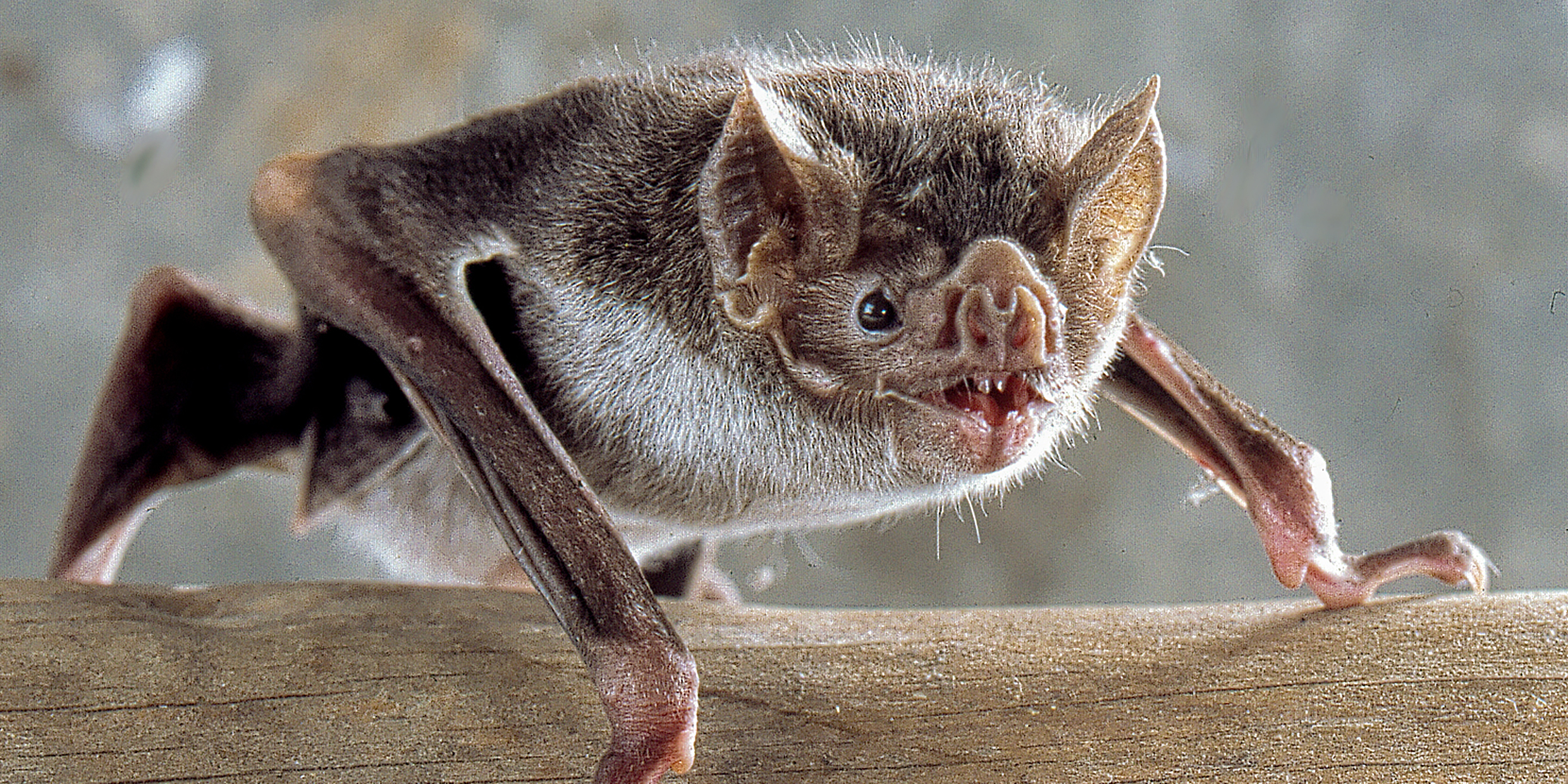Originally published 30 July 1990
As far as I know, Ogden Nash never wrote a verse about bats, but if he had it might have gone like this:
Nobody likes a bat. And that’s that.
Dirty, bloodsucking little beasts. Ugly faces. Cold and clammy. Bats get tangled in your hair. Bats carry rabies. Bats are flying rats. Nobody likes bats.
Witches fly at night in the form of bats. Bats are harbingers of death. And, of course, there is Bram Stoker’s Dracula, the black-caped vampire from Transylvania, favorite villain of horror flicks. She sleeps, her white throat exposed. He approaches, fangs glistening. He bends across her sleeping form…
Nobody, but nobody likes bats.
The good name of bats is besmirched by superstition. Our antipathy for these furry flying mammals has little basis in scientific fact, and hastens their extinction.
Populations endangered
There is growing evidence that bat populations in the United States and Europe have experienced marked declines. Many bat colonies around metropolitan centers have vanished; certain species of bats in the eastern United States are considered endangered.
“Good riddance!” most folks would say, and that attitude is part of the problem. Destruction of roost sites, chemical pesticides, wood preservatives, and a declining food supply (mostly insects) are important factors in the bat’s plight. But the biggest obstacle facing bat conservationists is bad press. Whales, bluebirds, and baby seals are loved by one and all, but nobody likes a bat.
Well, almost nobody. The poet Ruth Pitter picked up a tiny bat dragged in by the cat and found it “warm as milk, clean as a flower, smooth as silk.” For a long time there was a bat roost in the attic of a house adjacent to my own: to watch those squealing aerial acrobats cavort at twilight was a constant source of pleasure — and the numbers of bothersome insects they gobbled up was surely prodigious.
They are gone now, the attic sealed, another roost denied. And most folks would say the neighborhood is the better for it.
The best antidote to superstition is knowledge: that’s the point of science and the lesson of the bat. Consider, for example, the bat’s reputation as a bloodsucker.
Of the hundreds of species of bats in the world only three are vampires, and these are found only in certain parts of Central and South America. Two species feed on the blood of birds, but one species, the thumb-sized common vampire, Desmodus rotundus, sups on the blood of mammals, thus bringing into disrepute harmless cousins worldwide.
Even the batophile must flinch at the feeding habits of Desmodus rotundus, who chooses among its victims not only horses and cattle but also the occasional sleeping human. The bat inflicts a wound with razor-sharp incisors, then laps up the blood that is kept flowing freely by an anticoagulant in the bat’s saliva (no sucking required). In a single feeding Desmodus may consume more than its own weight, so much that the take off and flight back to the roost is made difficult. Two nights without a meal results in death by starvation.
Endearing vampires?
But even vampire bats are not without endearing qualities. In the February [1990] issue of Scientific American, batologist Gerald Wilkinson described the kindly social arrangements of Desmodus rotundus. Of particular interest is the vampire’s habit of food sharing. Female vampires form enduring relationships among themselves and engage in reciprocal altruism. If a bat fails to secure its evening meal, one of its pals, not necessarily its kin, will regurgitate to it a share of blood. The reward for this behavior is the favor returned on another occasion.
A charming photograph accompanies the Scientific American article — a pair of booted legs protruding from a hole at the base of a hollow tree. Wilkinson and his assistants spent from two to six hours a day on their backs, peering upwards into dark cavities, enduring, one supposes, an incessant rain of bat droppings, to document the kindlier habits of vampire bats. Within their roosts the little winged mammals tend their young, groom their friends, chat each other up, and share an occasional meal with a thirsty pal. What could be nicer?
Knowledge is the antidote to superstition — and that’s why scientists like Gerald Wilkinson lay on their backs in hollow trees enduring bat droppings and cramps. But this little essay in praise of bats was not inspired by Wilkinson’s supine researches. Rather, it was poet Randall Jarrell’s delightful children’s book The Bat-Poet that caused me to reflect how ignorance and superstition can affect our relationships with fellow creatures.
After all, who can read lines like the following and still find nothing to like about bats?
A bat is born Naked and blind and pale. His mother makes a pocket of her tail And catches him. He clings to her long fur By his thumbs and toes and teeth. And then the mother dances through the night Doubling and looping, soaring, somersaulting--- Her baby hangs on underneath.
“Bats” from The Bat-Poet, by Randall Jarrell. © Macmillan Publishing Co. 1963, 1964. Used by permission of publisher.



